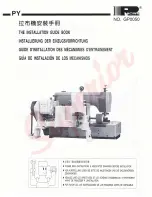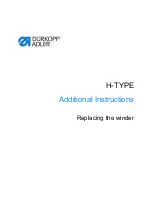Reviews:
No comments
Related manuals for Eden Rose

HCR3E Series
Brand: HappyJapan Pages: 216

PY Series
Brand: Racing Pages: 13

Royal 4000
Brand: EVA Pages: 56

SFAX-500
Brand: Samyung Pages: 87

Stairville VF-1200 DMX VertiFog CO2 FX
Brand: thomann Pages: 40

SureBind System One
Brand: GBC Pages: 34

Quantum Stylist Touch
Brand: Singer Pages: 4

612C
Brand: Shark Pages: 41

H-TYPE CLASSIC
Brand: DURKOPP ADLER Pages: 18

VC80LX
Brand: CleanStar Pages: 9

WMD 261 W
Brand: Beko Pages: 40

WMB61021S
Brand: Beko Pages: 40

WMB81431LW
Brand: Beko Pages: 40

KX-TG9472B
Brand: Panasonic Pages: 2

KX-TG9471B
Brand: Panasonic Pages: 2

KX-TG9345
Brand: Panasonic Pages: 2

KX-TG9331T
Brand: Panasonic Pages: 11

KX-TG9391
Brand: Panasonic Pages: 16

















